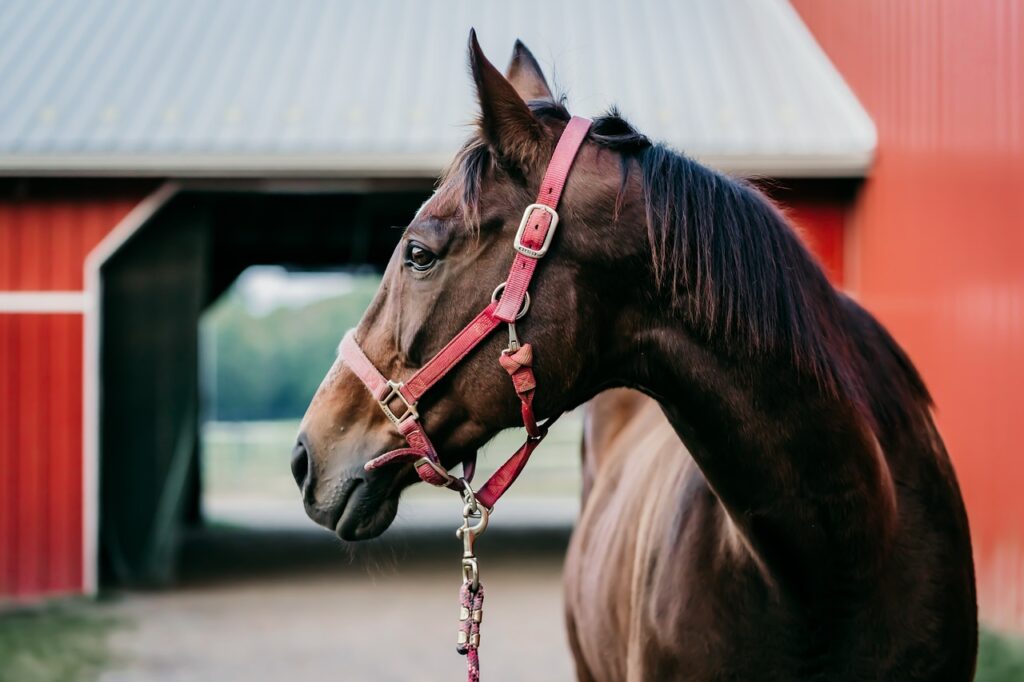A metal barn offers long term durability and outstanding protection for animals, tools, vehicles, and other essential assets. Its strength and weather resistance make it an attractive option for those seeking a dependable and low maintenance structure.
However, maintaining its appearance and functionality over time still requires consistent attention. Neglecting regular upkeep can lead to rust, corrosion, and other issues that shorten the lifespan of your metal barn. Proper maintenance helps retain both its appearance and its value.
This guide shares effective maintenance tips that will help your metal barn remain in excellent condition. From cleaning and inspections to repairs and preventive measures, each step plays a crucial role in keeping the structure in prime shape for many years.
Regular Cleaning for Longevity
Routine cleaning prevents dirt, mold, mildew, and debris from accumulating on your metal barn. Dust, bird droppings, and organic matter can stain the surface and contribute to corrosion over time. A thorough wash every few months using water and a mild detergent helps preserve the barn’s exterior. Avoid abrasive chemicals or tools that can scratch or damage the protective coating.
Start at the roof and work downward to ensure all areas receive attention. Rinse thoroughly to remove any residue left behind by the cleaning solution. Drying the surface with soft cloths or allowing it to air dry naturally can prevent water spots and streaks.
Maintaining cleanliness also includes clearing out leaves and debris from the roof and gutters. Clogged gutters cause water to pool and overflow, potentially damaging walls or the foundation. Regularly removing these materials allows rainwater to drain away properly and keeps the structure sound.
Roof Maintenance is Essential
The roof plays a vital role in shielding the barn’s contents from the elements. It requires frequent inspection to ensure it remains in top condition. Walk around the structure and observe the roof for any signs of rust, holes, or loose panels. After storms, strong winds, or heavy snowfall, take extra care to examine the roof for new damage.
Keep branches trimmed to prevent them from scratching or falling onto the roof. Moss and algae can grow in damp or shaded areas and should be cleaned off immediately. If water collects in certain spots, consider improving drainage or adjusting the pitch to encourage better runoff.
Secure any loose fasteners or seams you may discover. Replace any damaged panels promptly to prevent leaks and further deterioration. A well maintained roof extends the overall lifespan of your barn and safeguards everything inside.
Protect the Paint and Coating
The paint or protective coating on a metal barn is more than just cosmetic. It serves as a barrier between the metal surface and environmental elements that cause rust and corrosion. Inspect painted areas for chipping, peeling, or fading. These signs indicate that the surface may need a touch up or repaint.
Choose high quality paint that is specially designed for metal surfaces. Make sure the area is clean and dry before applying any new coating. Follow manufacturer instructions and allow adequate time for curing. This helps the new layer adhere properly and function effectively.
Avoid using harsh cleaning agents that might strip the protective layer. Wash surfaces gently to maintain the integrity of the paint. Taking these steps preserves the barn’s appearance and reduces long term repair costs.
Prevent Rust Before It Spreads
Rust weakens the structural integrity of metal and compromises both safety and aesthetics. Addressing rust early stops it from spreading and causing serious damage. Inspect the barn regularly, especially around joints, seams, doors, and corners where moisture tends to collect.
If rust is spotted, use a wire brush or sandpaper to remove it carefully. Clean the area thoroughly, then apply a rust inhibitor or primer. Finish with paint or sealant to protect the metal from future exposure. These steps not only restore the look of your barn but also prevent further corrosion.
Improve ventilation inside the barn to minimize moisture buildup. Humid environments accelerate rust formation, so proper airflow is essential. If necessary, install fans or vents to promote circulation and keep the interior dry.
Inspect Doors and Windows
Doors and windows provide access, ventilation, and light. They must operate smoothly and seal properly to prevent drafts and water intrusion. Check hinges, handles, and locks for signs of wear or misalignment. Lubricate moving parts to reduce friction and prevent rust.
Examine the weather stripping around doors and windows. Replace any that appear cracked or deteriorated. Tight seals help maintain internal temperatures and reduce the risk of water or pests entering the barn.
Clean glass and window frames regularly to ensure clear visibility and reduce the buildup of grime. Functional and well maintained doors and windows contribute to the barn’s overall performance and ease of use.
Ensure Proper Drainage
Standing water near or around the barn can erode the foundation and lead to serious structural issues. Monitor the area during and after rainstorms to see how water flows across the property. Adjust grading or add drainage systems if necessary to keep water moving away from the building.
Downspouts should extend several feet from the foundation to prevent saturation of the surrounding soil. If water continues to pool near the base of the barn, consider installing French drains or swales to divert it.
Gutters must remain clear and functional to direct water efficiently. Clean them regularly and repair any damage that could hinder water flow. These efforts help preserve the barn’s stability and appearance.
Maintain the Interior Space
The inside of your metal barn deserves as much attention as the outside. Regularly sweep or vacuum the floors to prevent buildup of dust, hay, or animal waste. These materials attract insects and retain moisture that leads to corrosion.
Inspect interior walls and ceiling panels for signs of leaks or condensation. If moisture is present, find and address the source immediately. Use absorbent materials or dehumidifiers to reduce humidity and protect metal surfaces.
Organize storage areas to allow for easy access and air circulation. Avoid stacking items directly against walls, as this can trap moisture and block airflow. A clean and well arranged interior enhances the functionality of your barn and supports its long term durability.
Watch for Pest Activity
Rodents, birds, and insects often seek shelter inside metal barns. Their presence can lead to unsanitary conditions and damage to the structure. Inspect for droppings, nests, or gnawed materials that signal an infestation.
Seal gaps, cracks, and small openings where animals might enter. Store feed and grain in airtight containers to reduce attraction. If you notice persistent problems, consult a professional for safe and effective control measures.
Pest prevention protects the structure, keeps the environment safe for animals, and avoids costly repairs caused by nesting or chewing.
Seasonal Maintenance Matters
Different times of the year present unique challenges for metal barns. Prepare the structure in advance to withstand seasonal conditions. Before winter, inspect insulation, repair any leaks, and make sure doors and windows close tightly. After heavy snowfall, remove excess snow from the roof to avoid stress or collapse.
During the spring and summer months, check for storm damage and clean away any debris that may have gathered. Make repairs promptly to stop small issues from growing into larger ones.
Fall is an excellent time to inspect seals, clean gutters, and ensure heating systems are ready for colder temperatures. Each season brings new tasks, but completing them regularly keeps the barn looking fresh and operating smoothly.
Use the Right Tools and Supplies
Using proper tools and maintenance supplies is essential for the upkeep of your metal barn. Soft bristle brushes, nonabrasive cleaners, and protective coatings formulated for metal surfaces help prevent damage during cleaning and repair.
Keep a toolkit with basic items such as screwdrivers, wrenches, sealant, and touch up paint. This allows you to handle minor issues immediately before they escalate. High quality tools make the process easier and deliver better results.
Always follow product instructions and safety guidelines. Wearing gloves, protective eyewear, and using ladders safely are all part of responsible maintenance practices.
Hire Professionals When Needed
While many maintenance tasks can be handled independently, some situations call for professional help. Structural issues, electrical problems, or widespread rust may require the expertise of licensed contractors. Hiring qualified professionals ensures repairs meet safety and building standards.
Schedule periodic inspections from specialists to identify hidden issues. These evaluations provide valuable insights and help you stay ahead of potential problems. Investing in professional services now can save money on costly repairs later.
Professionals also bring specialized tools and experience that allow them to address challenges more efficiently than the average barn owner. Their knowledge supports the overall health of your building.
Conclusion
Maintaining your metal barn involves a combination of routine cleaning, regular inspections, and prompt repairs. Consistent attention keeps the structure looking attractive and functioning effectively for many years. Following the practices outlined in this guide will help you preserve the value and performance of your investment.
From protecting the paint to improving drainage and watching for pests, each action contributes to the long term success of your barn. Taking time to address small issues early prevents expensive problems down the road. Treating maintenance as a regular part of barn ownership ensures you enjoy the full benefits of your metal structure far into the future.

